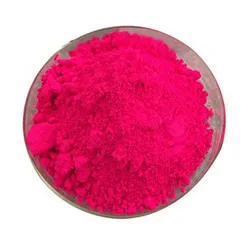Understanding Pigments for Plastics: Enhancing Aesthetics and Performance
2024-10-14
Pigments play a crucial role in the plastics industry, affecting not only the visual appeal of products but also their performance and durability. In this blog post, we will explore what pigments are, the different types available for plastics, and how they enhance both aesthetics and functionality.
1. What Are Pigments?
Pigments are finely ground, colored powders used to provide color to materials, including plastics. They are typically insoluble in the medium they are used in and come in various forms, including organic and inorganic types.
2. Types of Pigments for Plastics
- Organic Pigments: These are carbon-based compounds that offer vibrant colors and excellent transparency. They are widely used for applications requiring bright and vivid hues but may have lower lightfastness compared to inorganic pigments.
- Inorganic Pigments: Derived from mineral sources, these pigments are known for their opacity, lightfastness, and chemical stability. Common examples include titanium dioxide (for white) and iron oxides (for reds and browns).
- Specialty Pigments: These include metallic, pearlescent, and fluorescent pigments that provide unique visual effects. They are often used in niche applications where aesthetics are a priority.
3. Applications of Pigments in Plastics
- Consumer Goods: From toys to household items, pigments add visual appeal to plastic products, influencing consumer choices.
- Automotive Industry: In automotive parts, pigments are used to provide color while enhancing UV resistance and durability.
- Construction Materials: Pigments help color plastics used in roofing, siding, and other construction materials, contributing to aesthetics and energy efficiency.
4. The Importance of Pigment Selection
Choosing the right pigment involves considering factors such as:
- Color Stability: Ensuring that the pigment maintains its color over time under various conditions.
- Compatibility: The pigment must be compatible with the plastic resin and processing methods to avoid issues like separation or degradation.
- Environmental Regulations: Some pigments may have restrictions due to environmental concerns, so it’s essential to choose compliant options.
Conclusion
Pigments are essential components in the plastics industry, enhancing both the aesthetics and performance of products. Understanding the different types of pigments and their applications helps manufacturers make informed choices, ensuring high-quality and appealing products that meet market demands. As innovation in pigments continues, the possibilities for color and performance in plastics will only expand.



